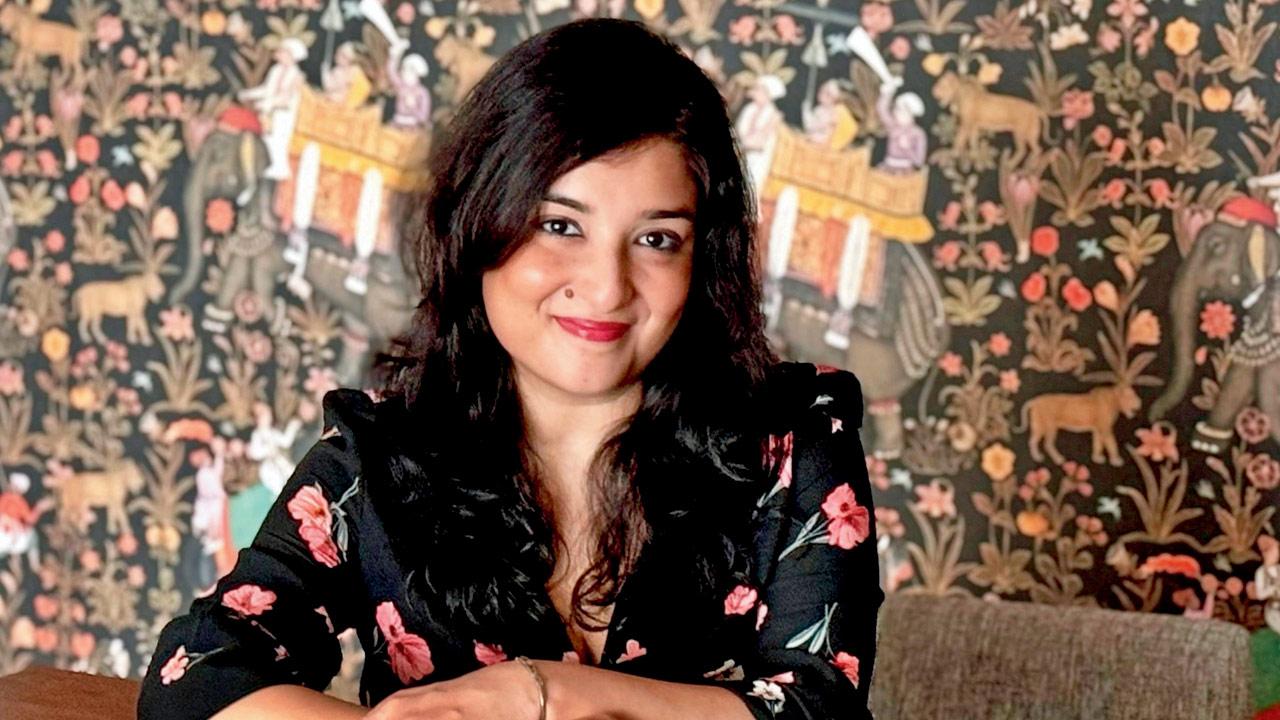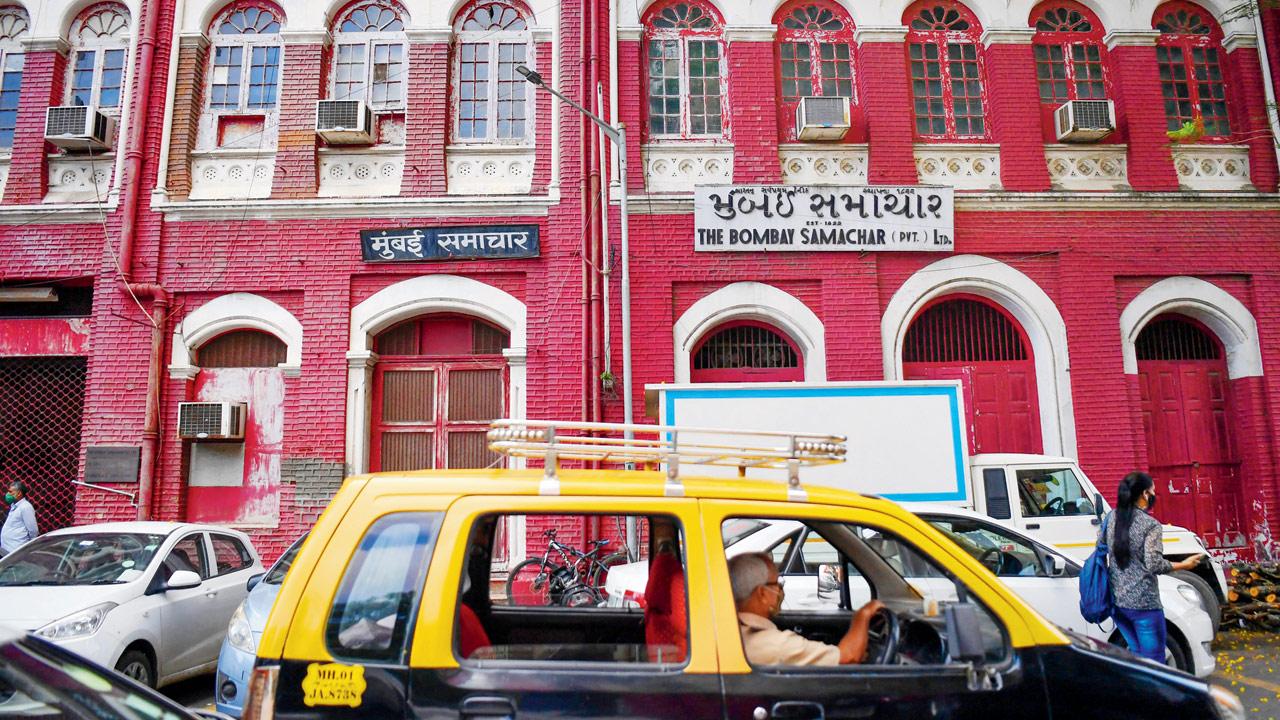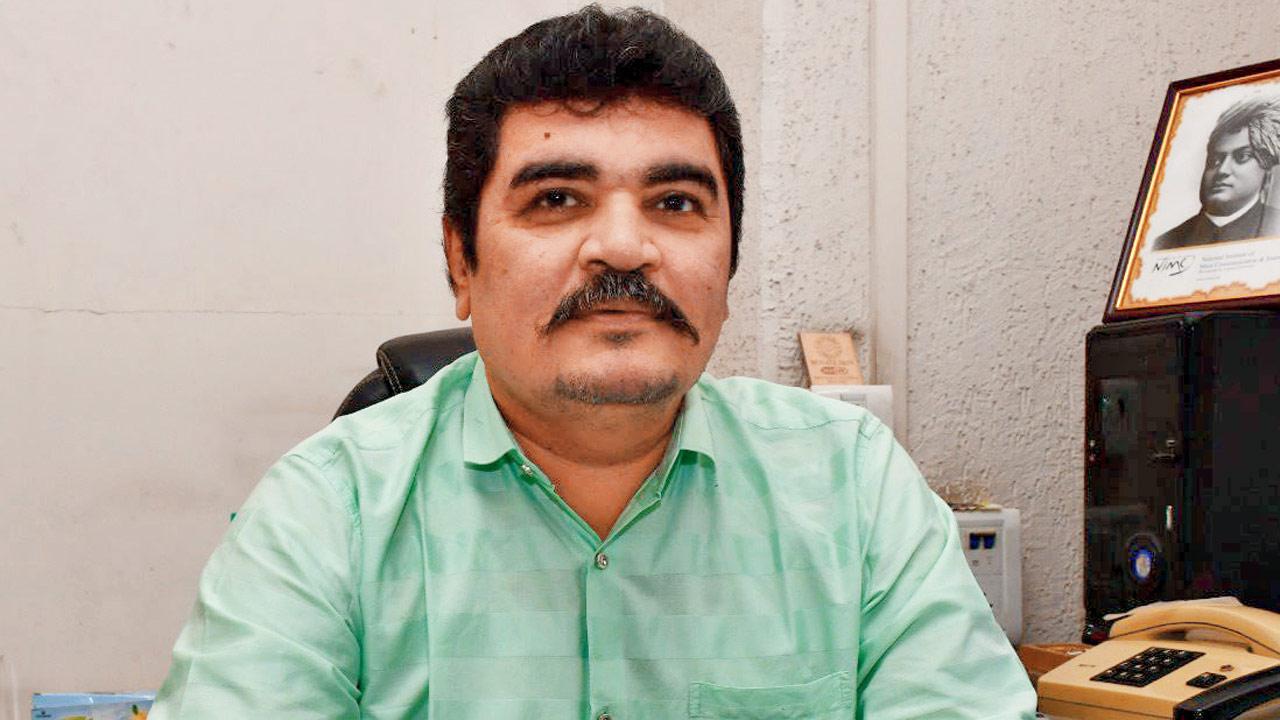The city - sliced, diced and served with a dash of sauce

Pic/Aditi Haralkar
A wince and a prayer
ADVERTISEMENT
It hurts to look cool for this man getting a permanent tattoo at Juhu beach
She’s all about lovebombing you, India!

PIC/ANURAG AHIRE
You have to have watched and heard Gagni Porwal’s song, Lovebomber Baby, or else you could be accused of living under a rock. Why did you ghost me? You said you loved me—she sings before humming—Um, na-na, um, na-na—and the internet has gone cuckoo over it. Though many have branded it cringe, the numbers don’t lie. The video got 1.3 million views on YouTube and many more million on Instagram. When we met Porwal, she said she was overwhelmed with her viral status. “I have been trying for a long time in Mumbai, and have been rejected a lot. But, I kept going. This song was written about heartbreak, and I am just being authentic to who I am,” says the Lokhandwala resident. So what’s next? “For now, I want to see what I can do with Lovebomber. The aim is to never stop.” You got this Gagni!
Greg Chappell sweats over missing Baggy Green

Greg Chappell in a Baggy Green. PIC/Getty Images
Greg Chappell is upset that his Baggy Green, the much revered cap of most Australian Test cricketers, has been misplaced as he shifted from Brisbane to Adelaide recently. “I’m not in the best of moods after losing the Baggy Green. It has been misplaced. We are all back in Adelaide. My younger son stays here. I want to spend these days with him and my grandchild,” said former India coach Greg, who has been married to Judy since the early 1970s. Greg had another Baggy Green, but that has been loaned to the South Australia Cricket Association. “I’ve yet to decide whether to take it back or not,” Greg told our correspondent Debasish Datta earlier this week. Finding the missing Baggy Green will help Greg as well as allow his first state cricket association to keep the cap for longer. In this case, finders are indeed gainers!
Slow burning love in Delhi

In her latest novel, The Grand Samara, Trisha Das weaves a lively tale of unexpected love set against the bustling backdrop of Delhi. Inspired by Das’s childhood favourite book, The Grand Sophy by Georgette Heyer, Das’ book follows the story of Samara Mansingh, a budding photographer who’s tired of living out of her suitcase and now wants to grow some roots. Caught between moving to New York and staying back in Delhi, striding into her life comes in Sharav, which just “might” influence her decision. Released last week, the book is for those who love their slow burn romances. It also explores the secondary romance of Sharav’s sister Diya and her childhood friend Yash. “In this day and age, we find many people demonising arranged marriages, and through Diya and Yash, I wanted to break this notion. Meeting someone through the likes of your parents isn’t all that bad,” Das tells this diarist. We will probably spending this rainy weekend with the Sharav and Samara… be still my beating heart!
Tough love for us workaholics

Earth Café
It’s a common sight to see professionals holed up in cafés, laptops open, notebooks scattered, working away while sipping their favourite brew(s). But for the unlucky few who toil through the weekend, too, a trip to their favourite coffee spot could perhaps be the only respite! While some may just pretend to work (no offence!), snapping a quick update for the ‘Gram may not be possible at one of the top-notch cafés in the city! This diarist pulled out his laptop late on a bustling Friday night at Earth Café, Juhu, only to be met with a polite yet firm prompt from the waiter—“Sorry, Sir. We don’t allow laptops in the café on weekends.” Not literally! You shouldn’t work here on the weekends here, is what they mean. Frankly, it’s refreshing to see someone making the effort to push Mumbaikars to take a break! The café encourages patrons to unwind with vegan bites and coffee and keep their laptops away. Despite being a busy scribe, the diarist can’t help but hope more cafés adopt this trend.
A film tribute to a newspaper for the ages

The film also details how the paper’s headquarters were established at the impossible-to-miss Red House at Fort. Pic/Getty Images
Mumbai Samachar has witnessed 200 years of the transformation of India. There are only a handful or organisations that can make this claim. We wanted to share this journey with people through a documentary,” says Nilesh Dave, Editor of the two-century-old Gujarati daily—the oldest existing newspaper in Asia—which is now gearing up for the public release of its documentary, 200 Not Out. The film covers the long legacy of the paper, right from its inception in 1822 by Furdoonjee Marzbanjee—a Parsi who had migrated from Surat to Mumbai with a love for the printed word—to its present-day version helmed by Managing Director Hormusji N Cama, another illustrious Parsi whose contribution to the nation was lauded by Home Minister Amit Shah during the unveiling of 200 Not Out recently.

Nilesh Dave
The film also details how the paper’s headquarters were established at the impossible-to-miss Red House at Fort, where the whirring of the printing press can be heard to this day. The only thing that has changed is the reporters and editors now clack away at computers’ keyboards instead of typewriters. “We hope to show future journalists what real journalism is through this film. Mumbai Samachar maintained readers’ trust for 200 years by following the age-old principle of printing only verified news. There’s a Gujarati saying: ‘If it’s appeared in Mumbai Samachar, it must be true,” says Dave, adding that
they are now in the process of getting a censor board certification for the documentary and sending it out to film festivals.
 Subscribe today by clicking the link and stay updated with the latest news!" Click here!
Subscribe today by clicking the link and stay updated with the latest news!" Click here!







